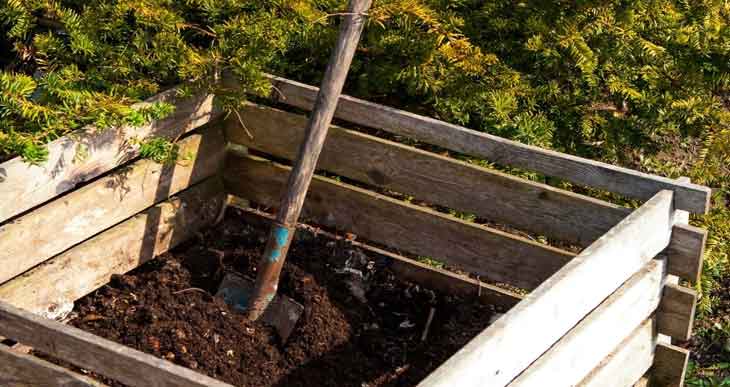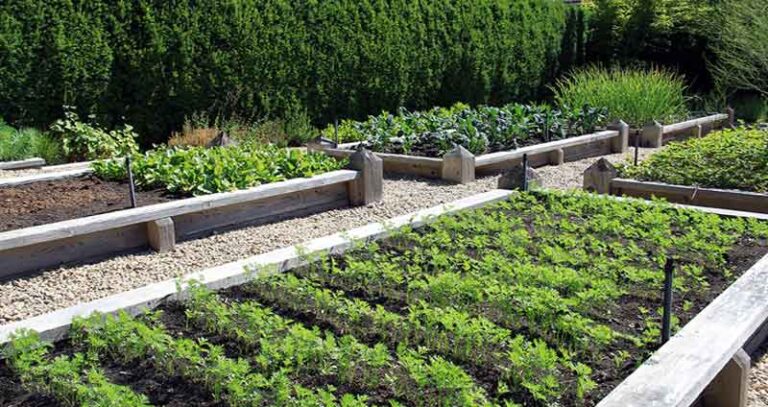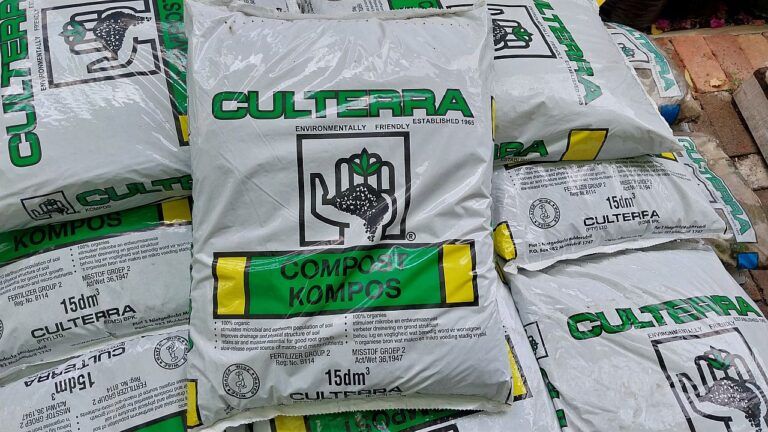How To Add Compost To Soil (The RIGHT Way)
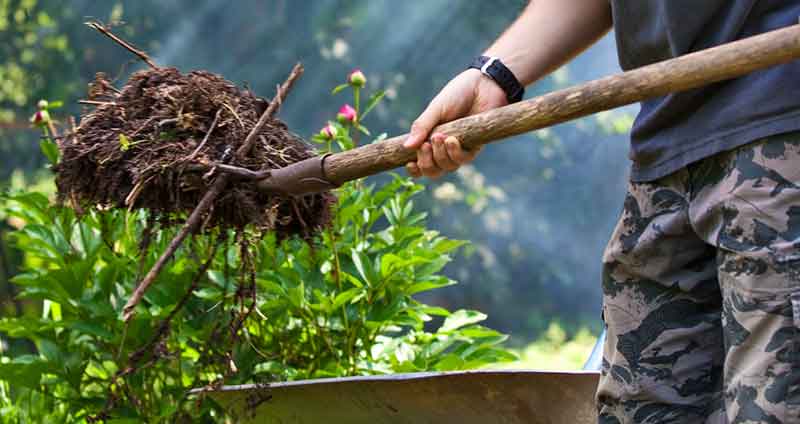
Most gardeners, even those new to gardening, are aware of the importance of using compost to feed their plants.
There are many ways that compost can be applied in your gardening. So many that it can become confusing to know which technique to use in every situation!
Should you just lay it on top of the ground? Or dig it in? And how much do you need?
In this guide, I’ll take a look at various methods to add compost to soil.
Keep reading! Perhaps you’ll discover a new way to use this valuable resource!
How Do You Add Compost To Soil?
Each method of adding compost to soil depends on the purpose of the compost. For example, compost can add nutrients for growing plants, amend poor quality soils, and reduce transplant stress when bedding. It can also be used as a protective layer of mulch or a surface plant feeder.
There is a reason that gardeners refer to compost as “black gold!” Compost is a resource with many uses in the garden other than feeding your plants to produce a higher yield.
Some common and important uses for compost in the garden include the following.
- Using compost as mulch
- Using compost to bed new plants
- Compost used to amend topsoil quality
- Compost used as a surface feeder
Below I’ll discuss each of these uses and the best method to apply.
How To Use Compost As Mulch
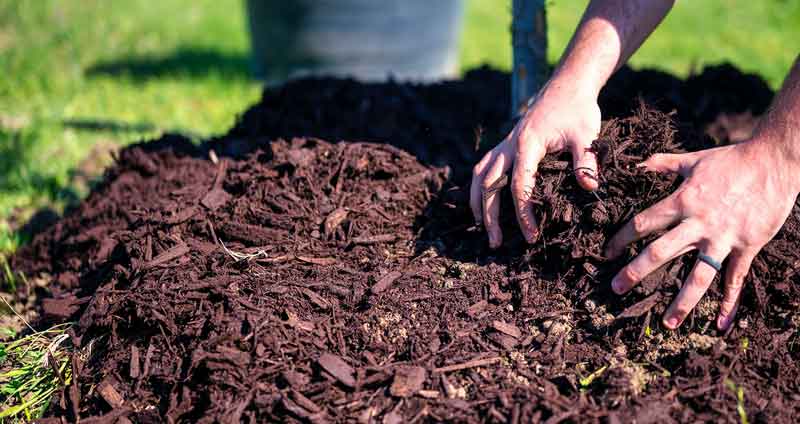
If you are not using a mulch layer for your plants, you should consider implementing this strategy in your garden. Mulching offers so many benefits that it is worth the additional effort to put this layer of protection on your garden.
Mulch helps to limit moisture loss from surface layers of the topsoil. This layer helps retain moisture, requires less watering, and keeps the ground temperature cooler and more stable. Mulch is also an effective protective measure to defend your plants from damaging frost.
Using compost as mulch has the added benefit of providing nutrients from the top-down, giving shallow roots of new plants the ability to access nutrients quicker.
The best way to use composts as mulch is to add a 2 to 4-inches thick layer on top of the soil around the plants. You can cover the entire bed in this mulch layer or treat the plants individually, with the mulch layer extending at least 12-inches from the base of the plant.
It’s unnecessary to sift or screen compost when using it as mulch. Instead, you want a mixture of sizes in the material to trap air pockets in the mulch layer, which acts as an insulator.
How To Use Compost To Bed New Plants
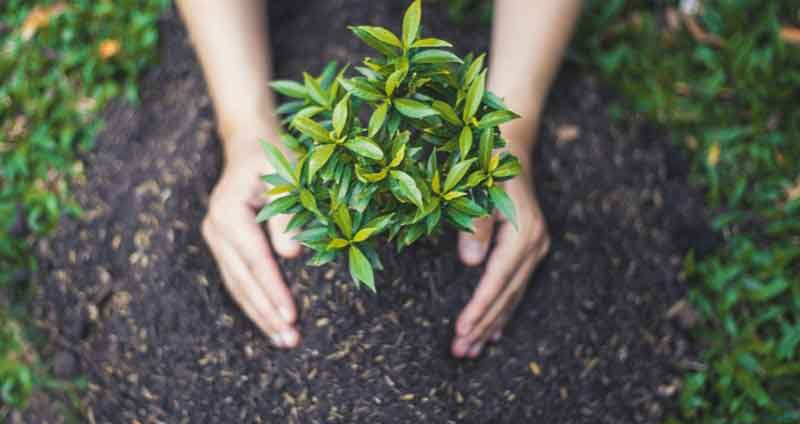
When transplanting new plants into your garden, it is necessary to give them an environment that offers easy access to nutrients and limits the stress of the transplant.
Compost plays a vital role in bedding new plants in the garden, giving the plant a loose medium to easily root, well-aerated, and ready access to nutrients.
To prepare your compost for bedding new plants, you need to sift or screen the compost. Sifting the compost removes non-decomposed components that could damage the new plant’s roots. It also aerates the compost materials allowing only finished or mature compost to be added.
A sifter like this one is ideal because it can be laid over a wheelbarrow for collecting finished compost (Amazon)
Care should be exercised when adding compost for new plants in the garden. If you are planting new seedlings with tender roots, you should take steps to prevent the delicate roots from coming into direct contact with the compost. The concentrated nutrients in compost can burn the roots of young plants and kill the seedlings.
For planting seedlings, dig the hole deeper than necessary. Sift the compost to ensure only mature compost is added to the hole.
- Take a handful of earth removed from the hole and mix it with a handful of sifted compost.
- Place this soil-compost mixture at the bottom of the hole.
- Place some normal soil on top of this mixture and then plant the seedling above that.
For larger plants:
- Cover the bottom of the hole in the ground with about 2-inches of compost for more established plants.
- Cover this compost layer with regular topsoil and plant the new plant.
- Mix a handful of sifted compost into the ground at the upper layers to add some top-down nutrients.
How To Add Compost For Soil Amendment

If your garden has poor soil quality, you can use compost to slowly improve its characteristics. Compost can be used to amend clay soil or adjust sandy soil to improve the quality of the growing environment,
End result… You get healthier plants!
How To Add Compost To Clay Soil
Clay soil poses several problems for growing plants. It holds onto water, which causes roots to become waterlogged, promoting root rot. Clay compacts, making it difficult for roots to penetrate and has limited aeration.
Adding compost to clay soil can improve these conditions and make it easier for the plants to thrive. First, however, you’ll need some tools to prepare the bed to add the compost. The tools can be simple hand tools or motorized versions.
Use a garden fork, a spade, or a hoe for hand tools. If you prefer a motorized option, you can use a garden tiller like this
The best time to add compost to clay soil is late winter or early spring. This gives the amended ground time to settle.
Loosen the upper 10 to 12-inches of topsoil using the garden fork or spade.
A motorized tiller makes this process a little easier on your back 🙂
- Spread 2 to 3-inches of un-sifted compost on the upper surface.
- Use the garden fork with a twisting motion to mix the compost with the loosened topsoil.
- Wet down the bed and wait 4 to 7 days before planting to give it time to settle.
When planting, add some compost to the upper layers as you go or as a mulch layer after planting.
How To Add Compost To Sandy Soil
Sandy soil does not hold moisture well and does not provide a secure rooting medium for the plants. In addition, the high drainage of sandy soil allows nutrients to be washed out, depleting available nutrients for the plants.
Adding compost can help improve the soil’s water retention and give the plants a nutrient-rich rooting medium.
The process is different from adding compost to regular soil. You want to use un-sifted compost to add bulk and a variety of material sizes.
You would use sifted compost for normal conditions to provide food for the plants. You would also use less compost in this instance.
Sandy soil requires large amounts of organic matter. Compost provides this and improves its quality and moisture-holding properties.
Sandy soil is generally reasonably loose, limiting the amount of physical labor to introduce the compost.
- Put down a 4-inch layer of compost on top of the soil.
- Work the compost into the upper layer of the ground using a garden fork.
- Push the fork into the surface and twist as you lift it out to thoroughly mix the compost about 10-inches deep.
Surface mulching with un-sifted compost is an essential part of improving sandy soil since it has the tendency to dry out rapidly.
Adding plants to sandy soil: add generous amounts of compost at the bottom of the hole, mixed with the earth to provide a good root bed for the plants.
One of the best ways to amend loose sand soil is to keep plants in it all the time!
The roots of plants assist by binding the soil and keeping the organic matter knitted together.
Try including winter and summer plants to retain the amendments you have made.
How To Add Compost To Soil As A Top Feeder

To apply compost as a top feeder, you should sift your compost to remove large chunks of organic material.
You can add the compost around the base of the plants only, which is the most efficient use of your compost, or you can treat the entire bed.
- Spread sifted compost on top of the ground until the compost layer is 1-inch thick.
- Use a garden fork to work the compost into the top 4-inches of the earth.
- Be careful not to damage roots when performing this action close to existing plants.
How Often Should You Add Compost To Soil?
The frequency with which you add compost to the soil will depend on the intended purpose. For example, you generally only need to add compost at the beginning of the growing season and once during for feeding your plants.
- Monitor your plants for nutrient deficiencies during their growth and add compost a handful at a time as needed.
- For soil amendment purposes in clay soil, you would treat the ground once a year at the end of winter, going into the beginning of spring.
- When treating sandy soil, you should add compost at the beginning of the growing season, including a layer of compost mulch. Replenish the mulch layer throughout the growing as the layer thins out.
FAQ:
To wrap up our discussion on adding compost to soil, here are a few frequent questions that gardeners commonly ask:
Do You Add Compost To The Soil Before Or After Planting?
Compost can be added to the soil before and after planting. Start by understanding the needs of the plant being planted and the condition of your soil.
Performing soil amendments: you add large quantities of compost at a time. It is best to let the bed rest after adding the compost for 7 days before planting. Then, water the bed every day during the rest period. This rest period allows the compost to settle into the soil and helps to reduce the risk of the compost burning the plant’s roots.
Add compost when planting to boost nutrients for the new plants: You can also apply the compost as a surface layer after planting. This slowly releases nutrients to the plant in the upper layers of the topsoil.
Can I Just Put Compost On Top Of Soil?
Compost can be added directly on top of the soil when introduced as a mulch layer for the plants.
For a more immediate benefit, work the compost into the soil.
How Long Does Compost Last In Soil?
Compost in soil should usually be replenished annually when preparing the ground for your next planting season.
Certain plants benefit from several compost feedings during the growing season, but this would need to be addressed individually.


